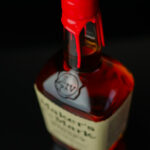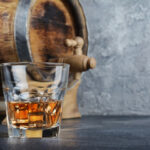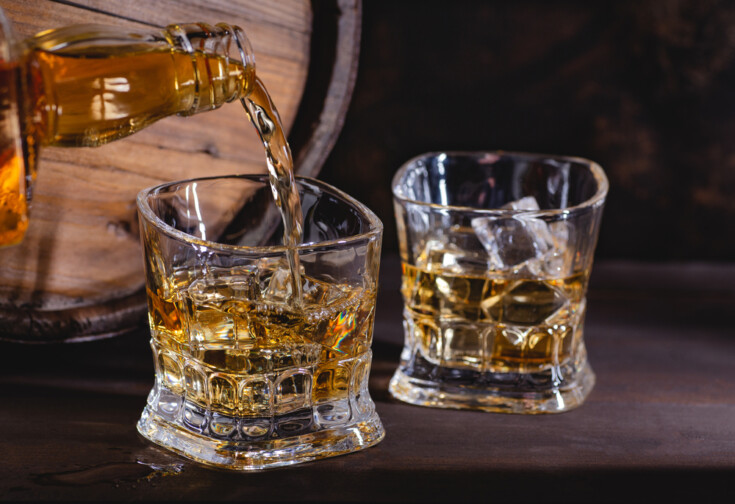
Bourbon is a type of whiskey that is made primarily from corn and aged in charred oak barrels. One of the most common questions about bourbon is whether it gets better with age. While most people assume that older bourbon is always better, the truth is more complicated than that.
According to experts, bourbon does get better with age, but only up to a certain point. The longer it is aged, the more complex and refined its flavor becomes. However, there comes a point where the oak barrel can overpower the flavors of the bourbon, resulting in a less desirable taste. Therefore, the key to producing great bourbon is finding the sweet spot between aging it long enough to develop its flavors but not so long that it becomes over-oaked.
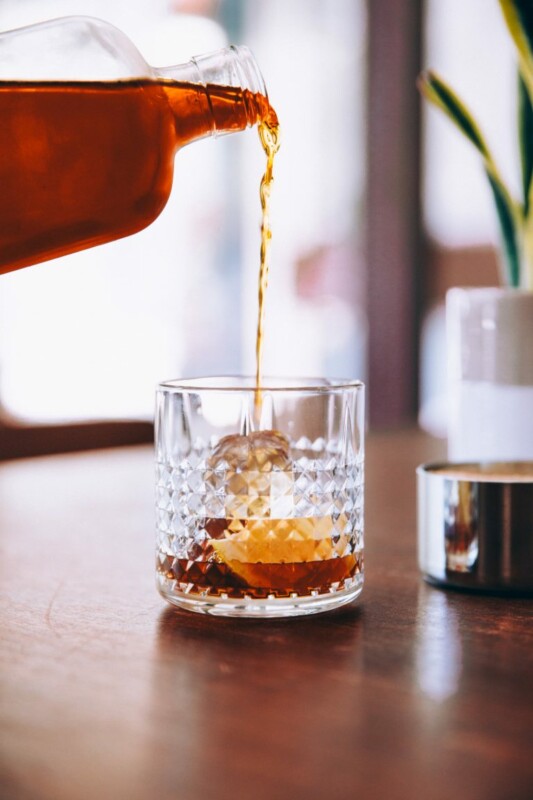 photo credit: negativespace.co
photo credit: negativespace.co
Table of Contents
The Basics of Bourbon Aging
Bourbon is a type of whiskey that is made primarily from corn. It is aged in charred oak barrels, which give it its signature flavor and color. The aging process is a crucial step in the production of bourbon, as it imparts the flavors and aromas that make it unique.
Here are some basic facts about bourbon aging:
- Age Requirements: According to federal standards, bourbon must be aged in new, charred oak barrels for a minimum of two years to be considered “straight bourbon.” However, there is no age requirement for bourbon that is not labeled as “straight.”
- Barrel Influence: The charred oak barrels used to age bourbon impart a variety of flavors and aromas, including vanilla, caramel, and oak. The longer the bourbon is aged, the more pronounced these flavors become.
- Climate: The climate in which the bourbon is aged can also have an impact on its flavor. In hotter climates, the bourbon can evaporate more quickly, which is known as the “angel’s share.” This can lead to a more concentrated flavor in the remaining bourbon.
- Blending: Most bourbons are blended from barrels of different ages to create a consistent flavor profile. The age statement on a bottle of bourbon refers to the youngest whiskey used in the blend.
- Peak Age: While bourbon can continue to age in the bottle, it does not necessarily improve with age. Most bourbon experts agree that the optimal age for bourbon is between 6 and 10 years, although this can vary depending on the specific whiskey.
The Aging Process and Flavor Profile
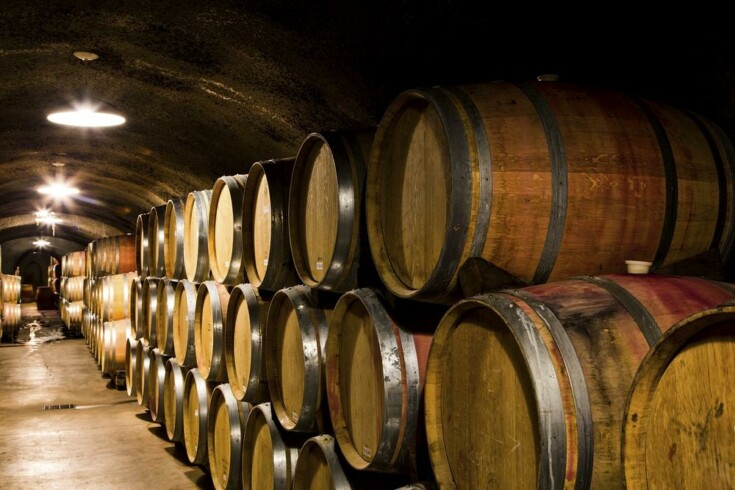 photo credit: theluxurylifestylemagazine.com
photo credit: theluxurylifestylemagazine.com
Bourbon is a type of whiskey that is aged in charred oak barrels. The aging process is one of the most critical factors that affect the flavor profile of bourbon. During the aging process, the whiskey interacts with the charred oak barrel and absorbs flavors and aromas from the wood. The longer the bourbon is aged, the more complex and intense the flavor profile becomes.
According to federal standards, bourbon must be aged in new charred oak barrels for aging at no greater than 125 proof (62.5% alcohol-by-volume) during the distillation process and must be made of at least 51% corn. Straight Bourbon must be aged for at least two years. However, many bourbons are aged for much longer periods, which can significantly impact their flavor profile.
One of the most important flavors that develop during the aging process is vanilla. The charred oak barrel provides a natural source of vanilla flavor, which is extracted by the whiskey during the aging process. This is why bourbon is often described as having a sweet, vanilla flavor. Other flavors that can develop during the aging process include caramel, toffee, and butterscotch.
The aging process also affects the color of bourbon. When bourbon is first distilled, it is clear, but as it ages in the charred oak barrel, it develops a rich, amber color. This color comes from the interaction between the whiskey and the charred oak barrel, which creates a chemical reaction that produces pigments called tannins.
Does Bourbon Get Better With Age?
The simple answer is yes, bourbon does get better with age, but only to a certain extent. Bourbon is aged in charred oak barrels, and during the aging process, the liquid absorbs flavors and aromas from the wood. The longer the bourbon is aged, the more complex its flavor profile becomes.
However, there comes a point where aging can have a negative effect on the bourbon. Over time, the oak barrel can impart too much wood flavor, making the bourbon taste overly woody or tannic. This is why most bourbons are aged for between 4 and 12 years, with some premium bourbons aged for even longer periods of time.
It’s important to note that not all bourbons are created equal. The quality of the bourbon, the age of the barrel, and the conditions in which the bourbon is aged can all have an impact on the final flavor. Some bourbons may reach their peak flavor profile after just a few years of aging, while others may continue to improve for several decades.
Factors Affecting Bourbon Aging
Several factors influence the aging process of bourbon, and each one can affect the final taste and quality of the spirit. Here are some of the most important factors:
Barrel Type
The type of barrel used to age bourbon is crucial to the final taste and color of the spirit. Bourbon must be aged in new, charred oak barrels, and the type of oak used can affect the flavor profile. American white oak is the most commonly used type of oak, but other types, such as French oak, can also be used. The charred layer on the inside of the barrel also contributes to the flavor and color of the bourbon.
Barrel Size
The size of the barrel used to age bourbon can also affect the flavor and aging process. Smaller barrels allow for more interaction between the spirit and the wood, resulting in a faster aging process and a more intense flavor. Larger barrels can produce a smoother, more balanced taste, but the aging process may take longer.
Storage Conditions
The storage conditions of bourbon during the aging process can also have an impact on the final product. Factors such as temperature, humidity, and light exposure can affect the aging process and the flavor profile. Bourbon aged in warmer climates may age faster and have a more intense flavor, while bourbon aged in cooler climates may have a smoother taste.
Age
Although there is no minimum age requirement for bourbon, the length of time it spends in the barrel can affect the final taste and quality of the spirit. Generally, the longer bourbon is aged, the more complex and smoother the taste will be. However, there is a point where the aging process can result in over-oaked or unpleasant flavors.
Mash Bill
The mash bill, or the recipe of grains used to make bourbon, can also affect the aging process and the final flavor profile. The percentage of corn, rye, and barley used can influence the sweetness, spiciness, and overall flavor of the bourbon. A higher percentage of corn can result in a sweeter taste, while a higher percentage of rye can produce a spicier flavor.
Common Misconceptions About Bourbon Aging
There are several misconceptions about bourbon aging that need to be addressed. Here are a few common ones:
The older the better
One of the most common misconceptions about bourbon aging is that the older the bourbon, the better it is. While it is true that many bourbons improve with age, there is no guarantee that a bourbon will be better simply because it has been aged longer. In fact, some bourbons can be over-aged, resulting in a flat, woody taste.
All bourbons age the same way
Another misconception is that all bourbons age the same way. The truth is that the aging process can vary depending on a number of factors, including the type of barrel used, the climate, and the location of the aging warehouse. For example, bourbons aged in hotter climates tend to mature faster than those aged in cooler climates.
Bourbon must be aged for a certain number of years
Many people believe that bourbon must be aged for a certain number of years before it can be considered a quality product. While it is true that bourbon must be aged for at least two years to be considered “straight bourbon,” there is no minimum age requirement for bourbon. In fact, some of the best bourbons on the market are aged for less than five years.
All bourbons taste the same after aging
Finally, some people believe that all bourbons taste the same after they have been aged. This is simply not true. The aging process can have a significant impact on the flavor profile of a bourbon, resulting in a wide range of tastes and aromas. Factors such as the type of barrel used, the location of the aging warehouse, and the climate can all contribute to the unique flavor of a particular bourbon.
Frequently Asked Questions
What is the optimal age for bourbon?
There is no specific age that is considered optimal for bourbon. The flavor profile of bourbon depends on various factors, including the type of barrel used, the location where it was aged, and the climate. However, most bourbon distillers agree that bourbon aged between 6 to 12 years produces a balanced and complex flavor profile.
How does aging affect the taste of bourbon?
Aging allows the bourbon to absorb flavors and aromas from the oak barrel, which results in a smoother and more complex flavor. The longer the bourbon is aged, the more it will take on the characteristics of the barrel, such as vanilla, caramel, and oak. Additionally, aging helps to mellow the harshness of the alcohol and allows the flavors to blend together.
What are the 7 rules of bourbon aging?
The 7 rules of bourbon aging are:
- The bourbon must be aged in new, charred oak barrels.
- The barrel must be made from American white oak.
- The bourbon must be distilled at no more than 160 proof.
- The bourbon must be entered into the barrel at no more than 125 proof.
- The bourbon must be bottled at no less than 80 proof.
- The bourbon must be aged in a federally bonded warehouse.
- The bourbon must be aged for a minimum of 2 years to be considered straight bourbon.
Is it safe to drink 30-year-old bourbon?
It is generally safe to drink 30-year-old bourbon as long as it has been stored properly and has not been contaminated. However, the flavor profile of the bourbon may have changed over time, and it may not taste the same as when it was first bottled.
Does bourbon go bad with age?
Bourbon does not go bad with age, but it can lose some of its flavor and aroma over time. Additionally, if the bourbon has been stored improperly, it can become contaminated and spoil.
Can you taste the difference between 10-year and 50-year aged bourbon?
Yes, there is a noticeable difference in taste between 10-year and 50-year aged bourbon. The longer the bourbon is aged, the more complex and intense the flavors become. A 50-year aged bourbon will have a much richer and more intense flavor profile than a 10-year aged bourbon. However, the taste can also depend on the quality of the barrel and the storage conditions.
Conclusion
In conclusion, bourbon does get better with age, but only up to a certain point. The sweet spot for aging bourbon is between 5 to 15 years. Beyond that, the taste can become too woody or bitter. However, this can vary depending on the distillery, the type of barrel used, and the climate where the bourbon is aged.
It’s important to note that once bourbon is bottled, it will not continue to improve with age. The aging process stops once the bourbon is removed from the barrel. However, if stored properly, unopened bottles of bourbon can last indefinitely. Once opened, the alcohol content will start to evaporate, and the whiskey will begin to lose its flavor over time.
The aging process is an important factor in the taste and quality of bourbon. It allows the whiskey to develop complex flavors and aromas that can only be achieved through time and patience. While there is no one-size-fits-all answer to how long bourbon should be aged, it’s clear that there is a balance between too little and too much time in the barrel.
Related Posts
Here are some related posts that provide additional information about bourbon and whiskey:
- “Whisky Experts” you say?
- The rebirth of silent distilleries: am I excited ?
- Is the new “Glenfiddich Grand Cru” Champagne-finished?
- Could this be the solution against whisky counterfeiting?
- What Does an Old Fashioned Cocktail Taste Like


